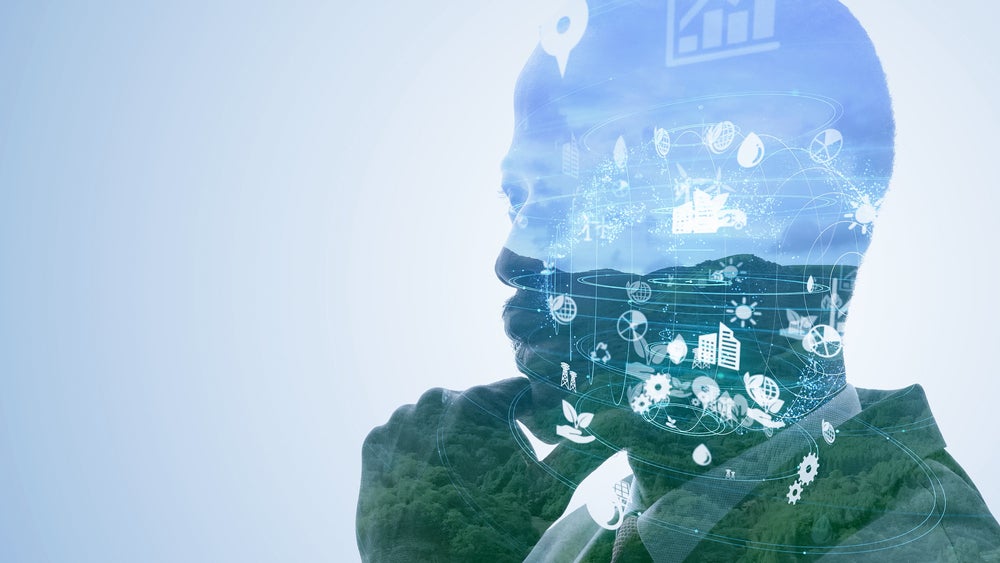Just how green is AI?
This is the question that has engaged journalists in recent months, with a trailblazing article in the FT reporting that the nascent technology is a “big guzzler of resources”. Indeed, this article is validated, with AI data centres currently using around 2% of total global electricity, with untold gallons of water extracted as coolant.
As AI adoption continues, this resource usage is only expected to grow, and GlobalData predicts that data centre power consumption will more than double by 2026.
However, this article argues for the opposite, accepting that even in the face of these issues, AI has the potential to be, and currently is being applied as, a useful tool to help companies reach their sustainability objectives.
An appetite for energy
The primary argument of the article is that AI consumes insurmountable amounts of carbon-emitting electricity. This is certainly backed up by the statistics, with many large tech companies that have traditionally masqueraded as green having increased their carbon emissions in recent years. For example, Google cites a rise of 48% since 2019.
However, arguments against AI’s green credentials fail to consider that energy can be produced renewably. As the quantity of electricity generated from renewable sources increases, there is a massive opportunity for technology companies to sustainably power their data centres.
How well do you really know your competitors?
Access the most comprehensive Company Profiles on the market, powered by GlobalData. Save hours of research. Gain competitive edge.

Thank you!
Your download email will arrive shortly
Not ready to buy yet? Download a free sample
We are confident about the unique quality of our Company Profiles. However, we want you to make the most beneficial decision for your business, so we offer a free sample that you can download by submitting the below form
By GlobalDataThe prospects are good, with Carbon Brief, a leading climate change website, claiming the world is on track in the next five years to add enough renewable electricity to the global grid to power the equivalent of the US and Canada. This year (2024) has only seen estimates increase, with an extra 728GW added to predictions in 2023 (roughly the combined power consumption of India and Germany), signalling confidence in a renewable future.
Although this is major progress, it is still far from the tripling of renewables by 2030 that COP28 promised. Therefore, tech companies are also looking at other options. Google and Amazon have both signed deals with Occidental, a major US-based energy company, to use carbon capture technology to negate their emissions, allowing a temporary solution to energy usage issues until renewable capacity can be increased further.
The green credentials of AI
Further innovations are also being implemented by technology companies to help them cope with the higher energy intensity of AI. For example, IBM is using biomimicry to copy aspects of the human brain to reduce energy usage. Instead of traditional binary, these chips use memristors, which can ‘remember’ past levels of electric charge, giving them a memory akin to the brain.
In addition, Google is using AI to directly tackle its growing energy usage. Its DeepMind platform has been utilised to reduce the energy usage of its data centres, providing real-time data that can subsequently be used to cool its data centres more efficiently. Using this technology, the company claims to have generated reductions of up to 40% in its data centre emissions.
Other companies are starting to see the benefits of using AI as a platform for emissions reductions, with General Electric Vernova’s CERius software being explicitly designed to help better report and plan emissions reduction strategies. In this example, AI technology helps drastically reduce the level of estimation involved in the emissions reporting process.
AI: a multifaceted environmental saviour?
The climate crisis consists of much more than just carbon dioxide emissions. Biodiversity loss is also a major environmental issue in desperate need of solving. The WWF claims that an average decrease in species populations of 69% has occurred since 1970, while the IUCN identifies more than 45,000 species threatened with extinction worldwide. This is an area in which AI’s full potential is being unleashed.
Firstly, AI can be used to take stock of what wildlife still exists. Google has been using AI to identify remaining areas of kelp forest off the coast of Australia, a traditionally labour-intensive job that can now be completed at speed, freeing up valuable time for other tasks.
Secondly, AI can be used to help renew these ecosystems. Dendra Systems, a UK-based startup, is using it as an afforestation aid, flying drones that, in addition to taking stock of species, can precisely disperse plant seeds, encouraging forests to regenerate. Furthermore, a recent Verdict article shows how AI can also be used to predict deforestation, allowing us to better mitigate against it.
The same skills that AI possesses in species identification can also be harnessed effectively in the circular economy sector. Recycling remains a large issue, with only 43% of waste recycled in the UK.
However, by using AI, this figure could increase further, as several companies, including conglomerate Unilever, are using the technology to quickly identify different types of plastic and increase the efficiency and effectiveness of recycling, helping to speed up the circular economy sector while cutting costs.
Saving the world with AI?
These innovations show that there is clear potential for AI to solve some of the world’s key environmental issues. Ultimately though, its green legacy will depend on whether technology companies can adapt quickly enough to its ever-growing energy intensity. There are positive signs that this is happening, with predictions of a renewable future growing in stature while, in the meantime, other innovative uses for the technology prove their worth.








